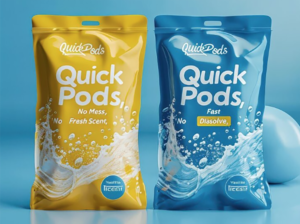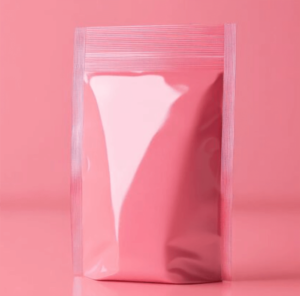Delamination in multilayer materials, whether in packaging, coatings, or composites, refers to the separation of those distinct layers. This failure can occur due to a variety of factors, often involving stresses at the interfaces between the layers. Here’s a breakdown of the common causes:
Inadequate Adhesion
- Poor Adhesive Quality: The adhesive used to bond the layers might be of subpar quality, lack sufficient strength, or be incompatible with the materials being joined.
- Insufficient or Uneven Adhesive Application: If the adhesive isn’t applied in the correct amount or is unevenly distributed, weak points can form, leading to delamination.
- Improper Curing: Adhesives often require specific curing conditions (temperature, time) to achieve optimal bond strength. Deviations from these conditions can result in weak bonds.
Environmental Factors
- Moisture and Humidity: Moisture can penetrate the interfaces between layers, weakening the adhesive bond or causing the materials to swell or expand at different rates.
- Temperature Changes: Fluctuations in temperature can cause the different layers to expand and contract at different rates, creating stress at the interfaces. This is known as thermal stress.
- UV Exposure: Ultraviolet (UV) radiation can degrade certain materials and adhesives, weakening the bonds between layers.
- Impact or Abrasion: Physical impacts or abrasion can create stress concentrations at the interfaces, leading to delamination.
- Flexing or Bending: Repeated flexing or bending can cause fatigue and stress at the interfaces, eventually leading to delamination.
- Internal Stresses: Stresses introduced during the manufacturing process, such as residual stresses from molding or lamination, can contribute to delamination.
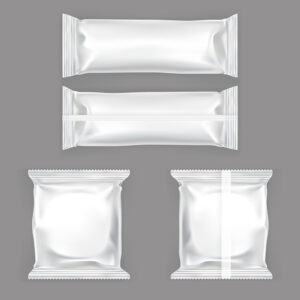
Material Incompatibilities
- Different Thermal Expansion Coefficients: If the layers have significantly different thermal expansion coefficients, temperature changes can create substantial stress at the interfaces.
- Chemical Incompatibilities: Reactions between the layers or between the layers and the environment can weaken the bonds.
Manufacturing Defects:
Contamination: Contamination at the interfaces during manufacturing can prevent proper bonding.
Improper Lamination Process: Issues with the lamination process, such as incorrect temperature or pressure, can lead to weak bonds.
In packaging materials, delamination of multilayer films can have multiple negative impacts on the product. These impacts relate to shelf life, quality, and safety of the product. The following are some of the main effects:
Reduced barrier properties
Multilayer films are often designed to provide barrier properties such as moisture, oxygen, and UV protection. Delamination can cause these barriers to fail, resulting in premature exposure of the product to harmful environments.
Delamination of food packaging can cause moisture, oxidation, spoilage and loss of freshness and taste.
Drug packaging delamination will make the drug failure, and even produce harmful substances, posing a safety hazard.
Product quality is damaged
Appearance changes: Delamination may lead to bubbles, wrinkles, or peeling of the packaging, affecting the appearance of the product and lowering the grade of the product.
Content deterioration: If it is food or drug packaging, delamination will accelerate the deterioration of the content, affecting the quality of the product.
Shortened shelf life
Due to the decline in barrier properties, the product is more susceptible to environmental factors, accelerating product aging, shortening the shelf life.
Safety issues
Harmful substances release: Some adhesives or additives in the multilayer film may release harmful substances after delamination, contaminating the product and posing a threat to human health.
Impaired packaging integrity: Delamination may lead to packaging breakage, resulting in product contamination or leakage, posing a safety hazard.
Optimizing the lamination process to reduce delamination requires three aspects: material selection, process parameter control and equipment precision. The following are some specific optimization measures:
Material selection and matching
Material compatibility: Ensure good compatibility of materials for different layers, e.g. use high temperature resistant PP film or metal film in high temperature environments.
Adhesive selection: Select adhesives that are suitable for the material properties to ensure strong interlayer bonding.
Optimization of process parameters
Temperature control: precisely control the lamination temperature to ensure that the resin flow and curing process meet the requirements. Too low a temperature may lead to insufficient flow of resin, while too high a temperature may lead to excessive flow.
Pressure control: Adjust the pressure according to the number of layers and thickness of the multilayer board to ensure that the layers are tightly bonded and to avoid deformation caused by excessive pressure.
Time control: Set the appropriate pressing time according to the material characteristics and process requirements to ensure that the resin is fully cured.
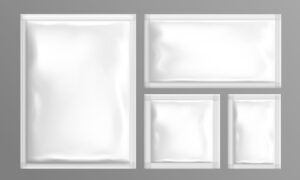
Equipment precision and maintenance
High-precision equipment: Invest in high-precision equipment to improve the quality of lamination and production efficiency.
Equipment maintenance: Regularly maintain the equipment to ensure its stable operation and keep the best performance.
Surface treatment and layout
Surface treatment: Use corona treatment or plasma treatment to improve the surface energy of materials and enhance bonding strength.
Nesting Optimization: Improve the nesting and placing methods to improve the alignment accuracy and press uniformity of the multilayer boards.
Through these measures, delamination problems in the lamination process can be significantly reduced, and product quality and stability can be improved.
What Can We Do to Prevent Delamination?
1. Material Selection:
- Matching Thermal Expansion: Select materials with similar thermal expansion coefficients to minimize thermal stresses.
- Moisture Resistance: Choose materials with low moisture absorption or apply moisture barriers.
- Chemical Compatibility: Ensure materials are compatible with the operating environment.
2.Adhesive Optimization:
- Proper Adhesive Selection: Choose an adhesive that is compatible with the materials, operating temperature, and chemical environment.
- Surface Preparation: Thoroughly clean and prepare surfaces to remove contaminants and enhance adhesion.
- Controlled Curing: Follow the adhesive manufacturer’s recommendations for curing time, temperature, and pressure.
- Adhesive Layer Thickness: Ensure a proper adhesive layer thickness. Too little can result in weak bonds, and too much can lead to internal stresses.
3.Manufacturing Process Control:
- Clean Room Environments: Minimize contamination during lamination or bonding.
- Controlled Temperature and Humidity: Maintain consistent environmental conditions during manufacturing.
- Uniform Pressure Application: Ensure uniform pressure distribution during bonding.
- Quality Control: Implement rigorous quality control measures to detect defects early.
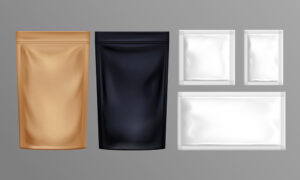
4.Design Considerations:
- Stress Relief Features: Incorporate features in the design to minimize stress concentrations.
- Edge Sealing: Seal edges to prevent moisture ingress.
- Reinforcements: Add reinforcing layers or fibers to increase mechanical strength.
5.Environmental Protection:
- Protective Coatings: Apply coatings to protect against moisture, UV radiation, and chemical attack.
- Encapsulation: Enclose the multilayer structure in a protective housing.
6.Testing and Validation:
- Environmental Testing: Subject the multilayer material to accelerated environmental testing (e.g., temperature cycling, humidity testing) to identify potential weaknesses.
- Mechanical Testing: Perform mechanical tests (e.g., peel tests, shear tests) to evaluate bond strength.
- Non-Destructive Testing: Use techniques like ultrasonic testing to detect internal defects without damaging the material.
Key Takeaways:
- Delamination is a complex issue with multiple contributing factors.
- Prevention requires a holistic approach that considers material selection, adhesive optimization, manufacturing process control, design considerations, environmental protection, and rigorous testing.
- Collaboration between material scientists, engineers, and manufacturers is essential to develop reliable multilayer materials.

